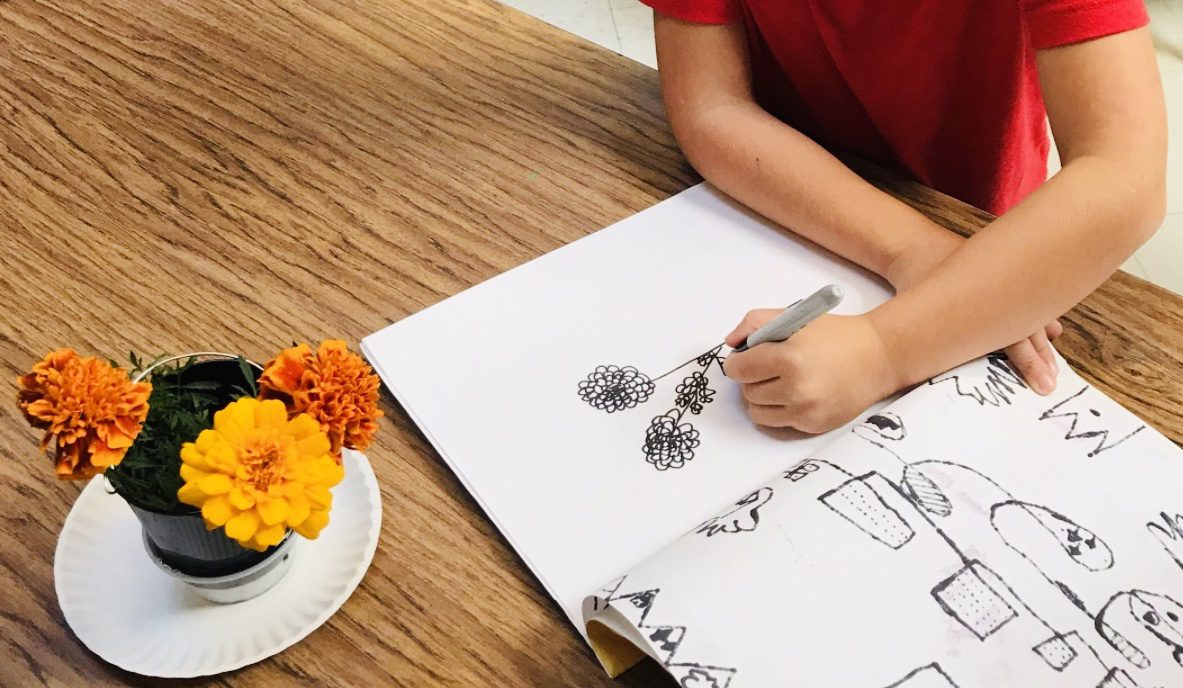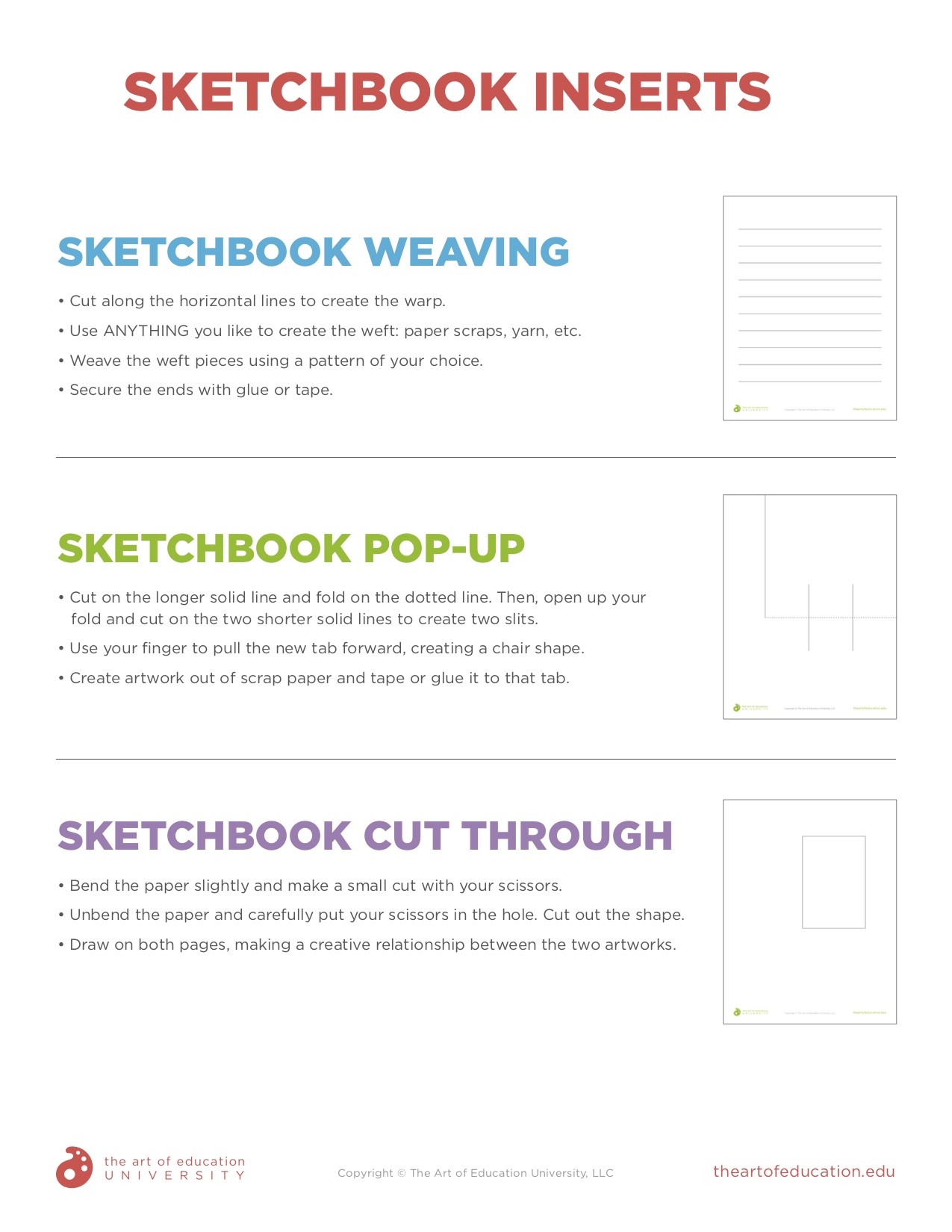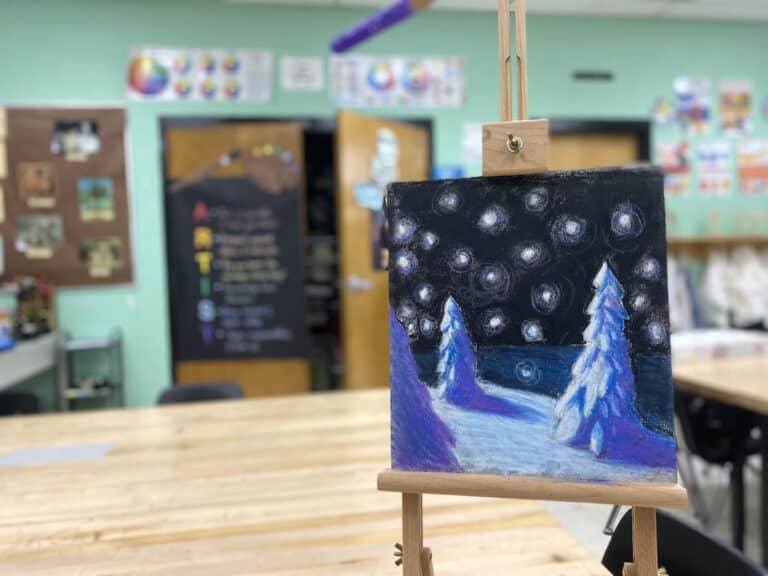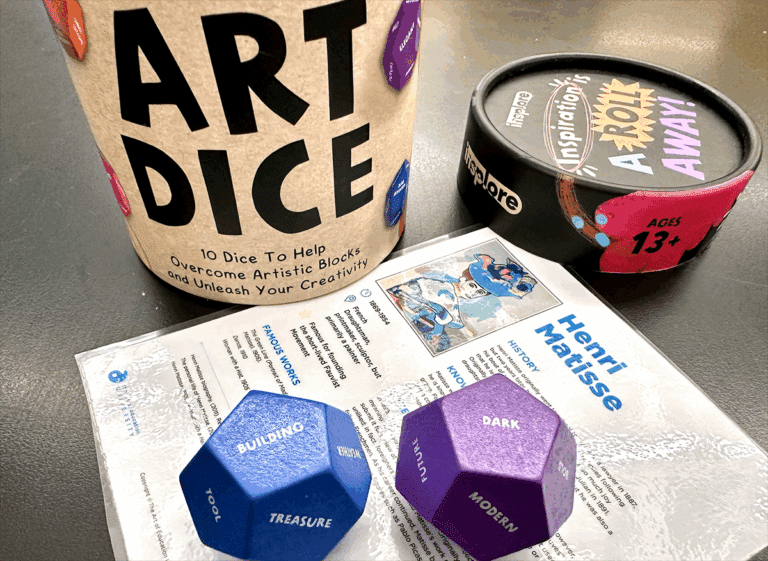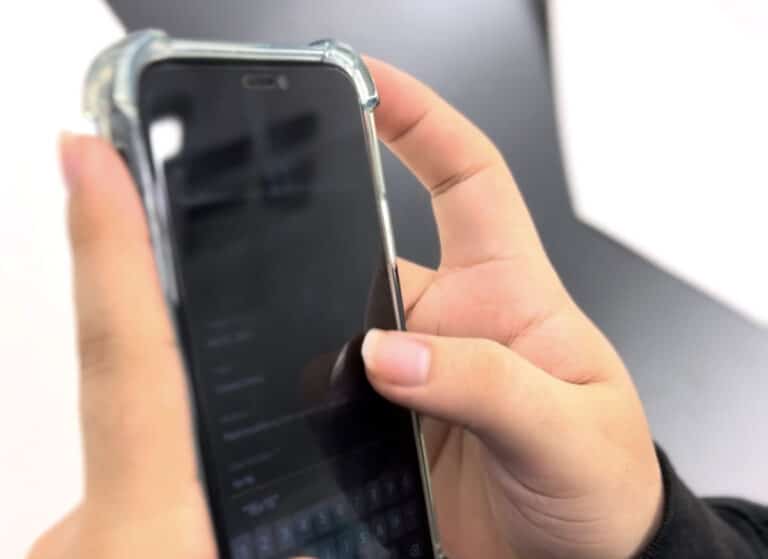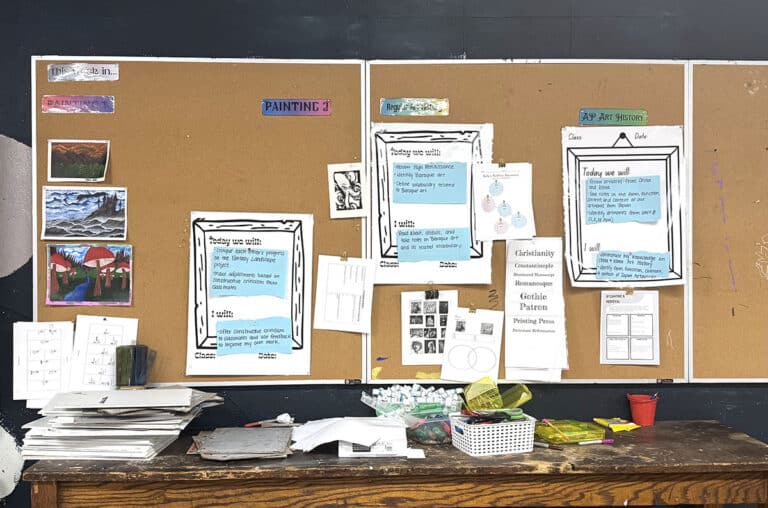Can ALL classes work in sketchbooks? Even kindergarteners? Insanity? Well, it isn’t!
Once you begin using sketchbooks with all levels, you will realize what you have been missing. Eventually, you will say to yourself, “Why wasn’t I doing this the whole time!?”

Creating sketchbooks with your elementary students can save your sanity. If you aren’t already utilizing sketchbooks, you may find starting the school year with sketchbooks in your elementary classroom may be just the right addition.
There are so many different ways to use sketchbooks in the art room. But first, you need to figure out how you are going to get the sketchbooks. You may choose to purchase spiral notebooks. You may ask students to bring in an art sketchbook as part of their school supply list. You may ask the PTO to provide the funds for fancy sketchbooks. Or, you may choose a more fun route and create sketchbooks using basic art materials! Check out this video to see how.
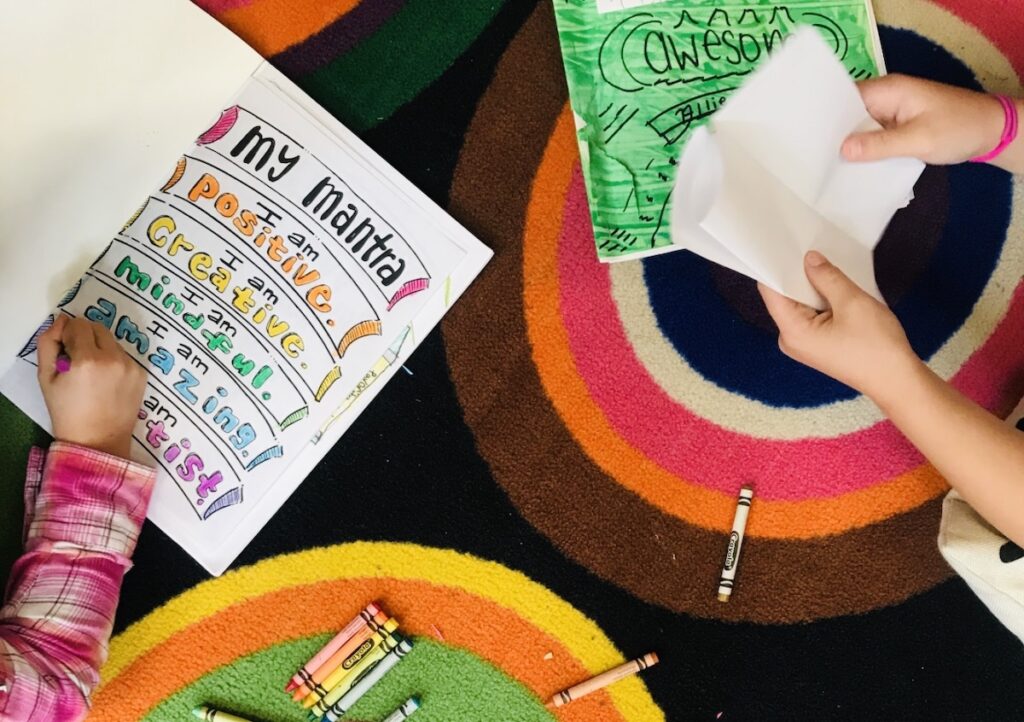
3 Steps To Make Your Own Sketchbooks
1. Create sketchbook covers.
In art, kids want to get messy! The best way to begin sketchbooks is to make covers. This is especially applicable at the beginning of the school year when students have been going over expectations and routines. Take a fun brain break for two minutes and get students creating their own unique piece of art to serve as their sketchbook protection for the rest of the school year.
- Use art paste (dubbed “art boogers” in our class due to the snotty consistency) mixed with tempera paint. After slathering a layer or two over a thick piece of 12×18” paper, use a variety of texture tools to scratch in different designs.
- Consider color-coding or using specific patterns on the covers of your sketchbooks according to grade level. It will be easier for you and your students to identify which stack of sketchbooks belongs to what class.
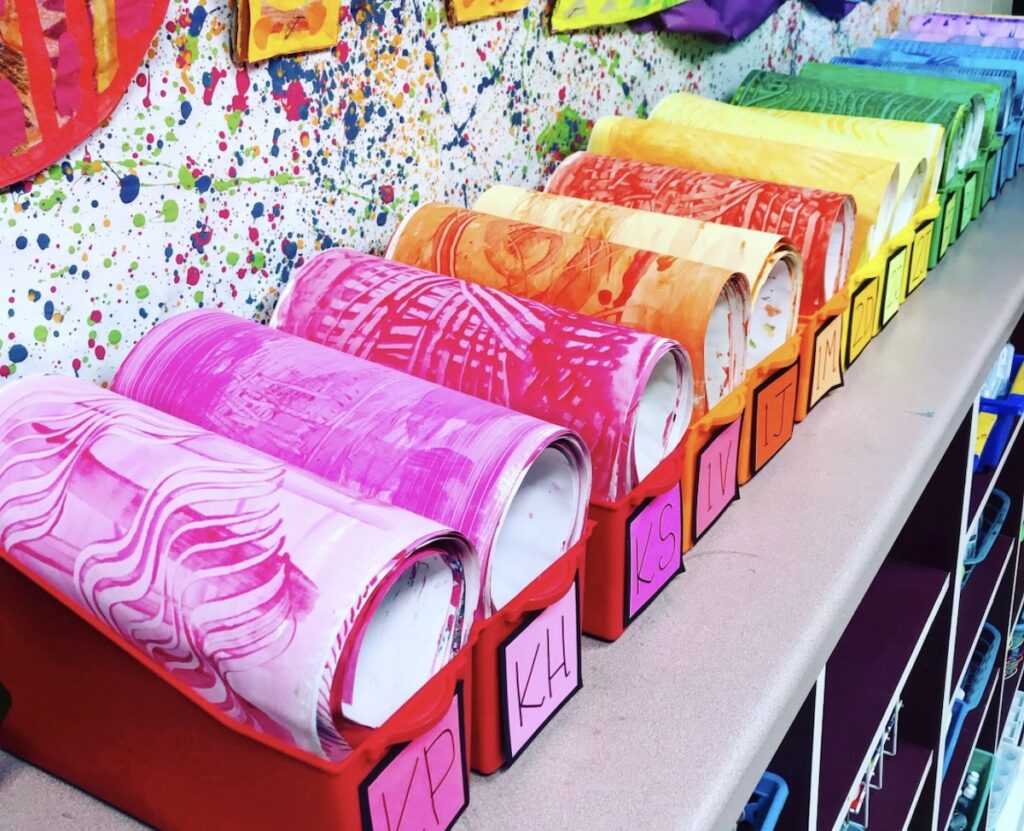
2. Sketchbook assembly.
After the covers are made, decide what goes inside the students’ sketchbooks. You can keep it simple by stapling in a stack of copy paper or newsprint. You can also use a three-hole punch and paper fasteners if you want to be able to add paper easily. Finally, add some gems or easily-adhered “treasures” to make them even more personal.
- When it’s time to put sketchbooks together, set up an assembly line of materials that need to be in sketchbooks before they visit the “staple fairy” (the teacher) in charge of putting their book together.
- Include at least ten blank copy papers as well as some coloring pages, an elements of arts handout, and an art mantra coloring sheet. Adding other pre-prepared pages to sketchbooks gives students somewhere to start right away.
Use these downloadable templates to add to your sketchbooks.
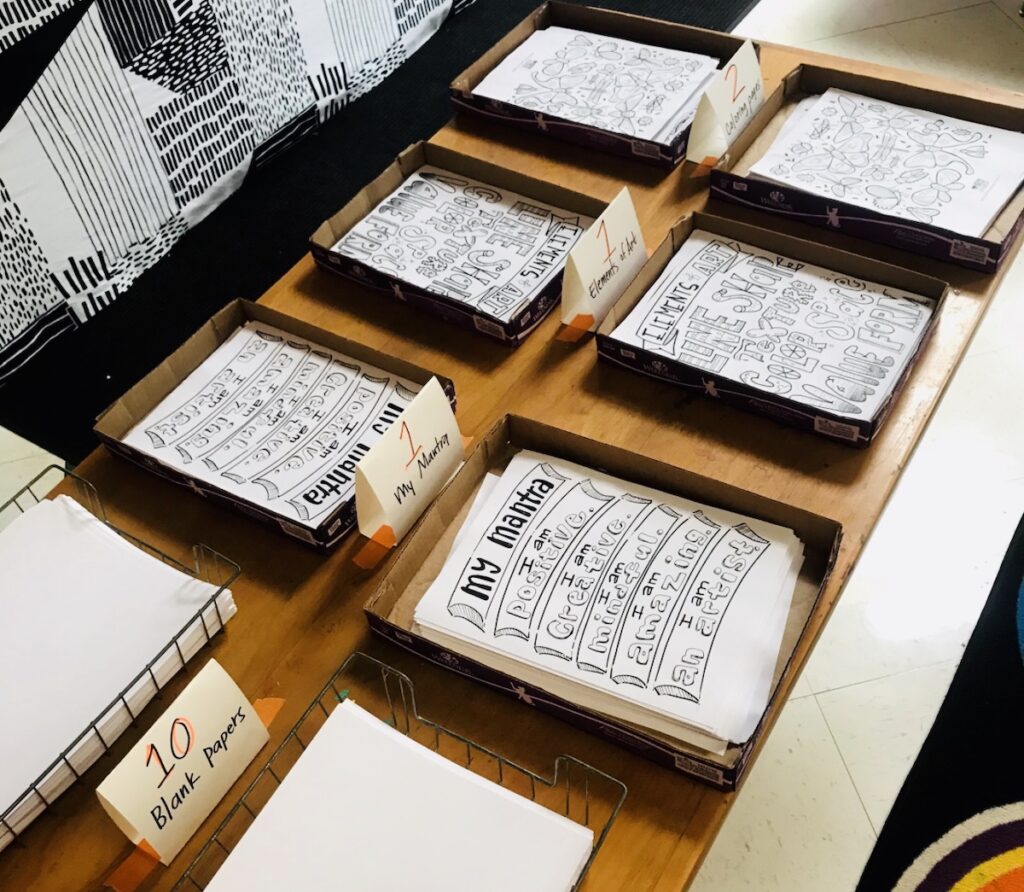
3. Create! Here are some ideas:
- Brainstorming—Sketchbooks are a safe place for students to brainstorm ideas in a low-pressure way.
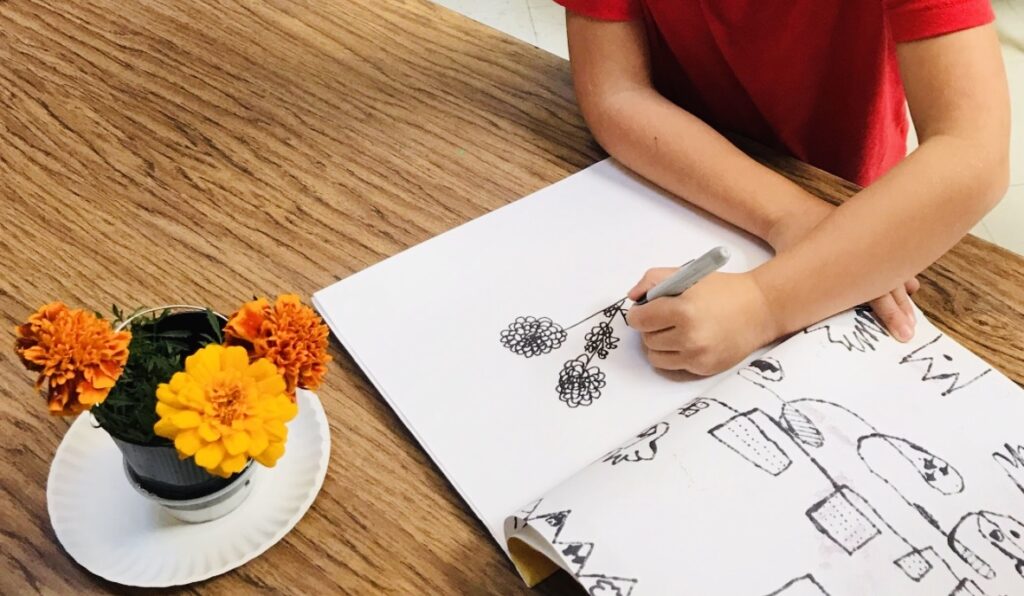
- Note-taking—When you want students to remember specific content, artist names, or vocabulary, have them write it in their sketchbook, or include it in the stapled in sheets, so they always know where to find it.
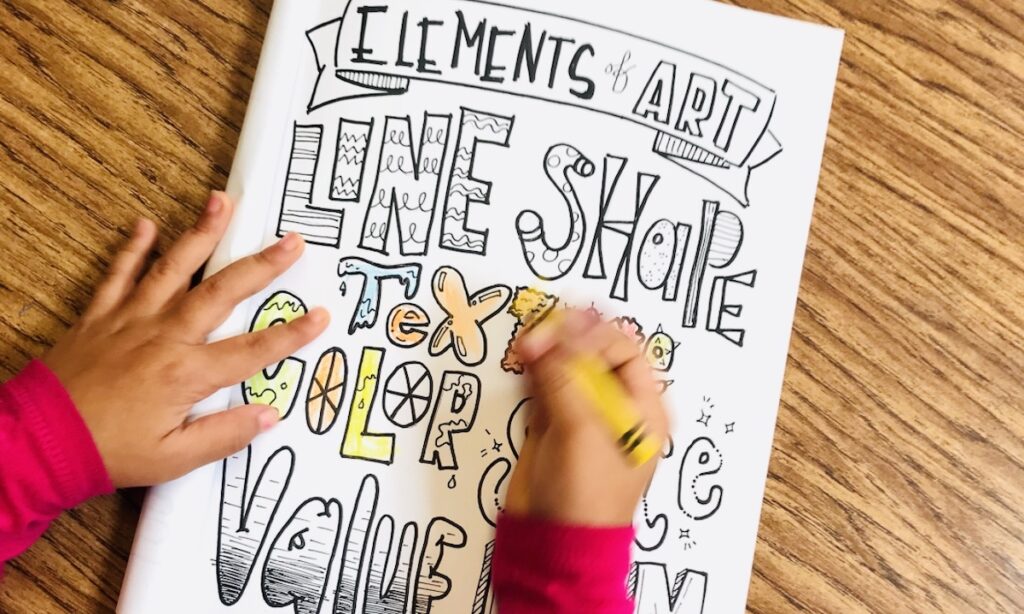
- Substitute plans—Use a drawing or painting prompt to create low-prep sub plans in a jiffy! (And yes, you can paint in a sketchbook see how here).
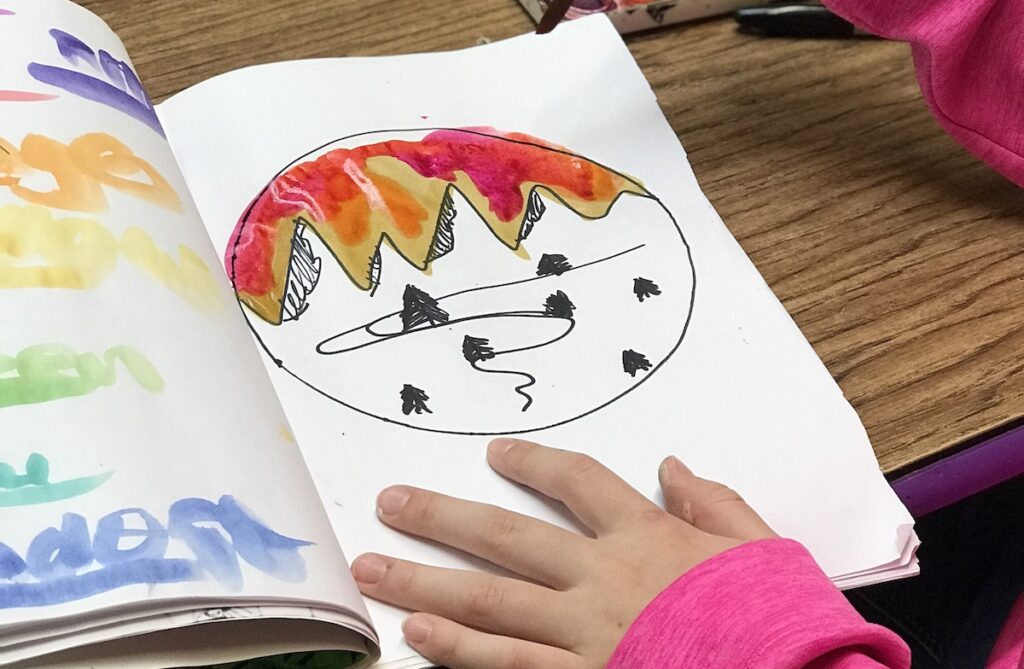
- Early Finishers—Sketchbooks are a great tool for students who finish projects early. If you create lots of ideas for what students can work on in their sketchbooks when they have extra time, this can be especially effective.
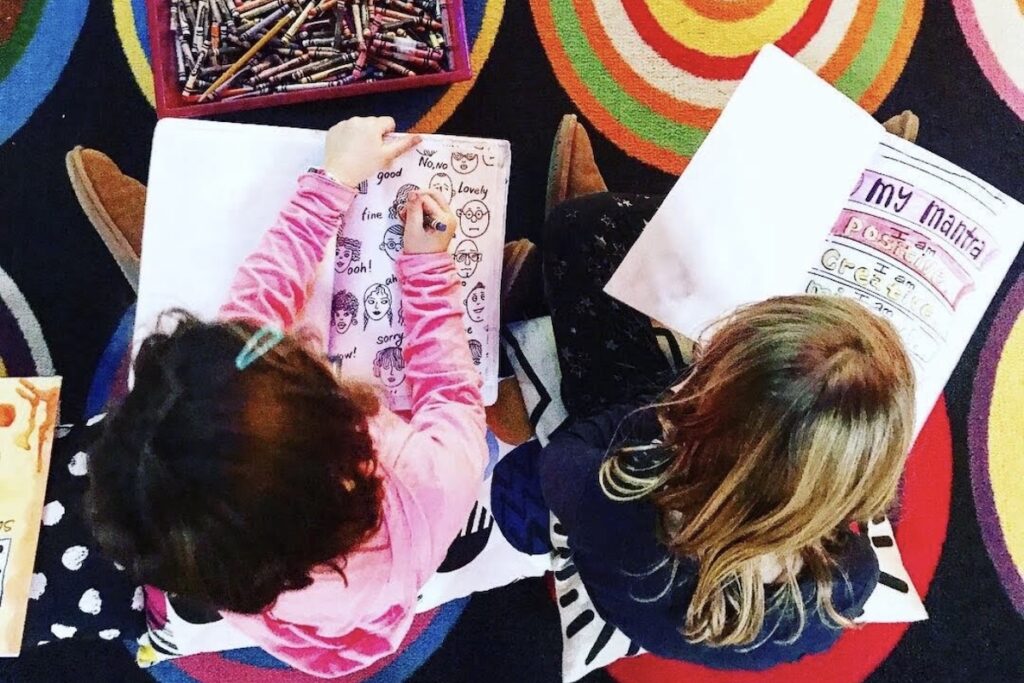
- Documenting Growth—Once you have started a sketchbook tradition, you can compare student growth over a single school year or as they create sketchbooks from year to year. Sketchbooks can also be a beneficial resource for you, as an educator, to track your students’ learning progress.
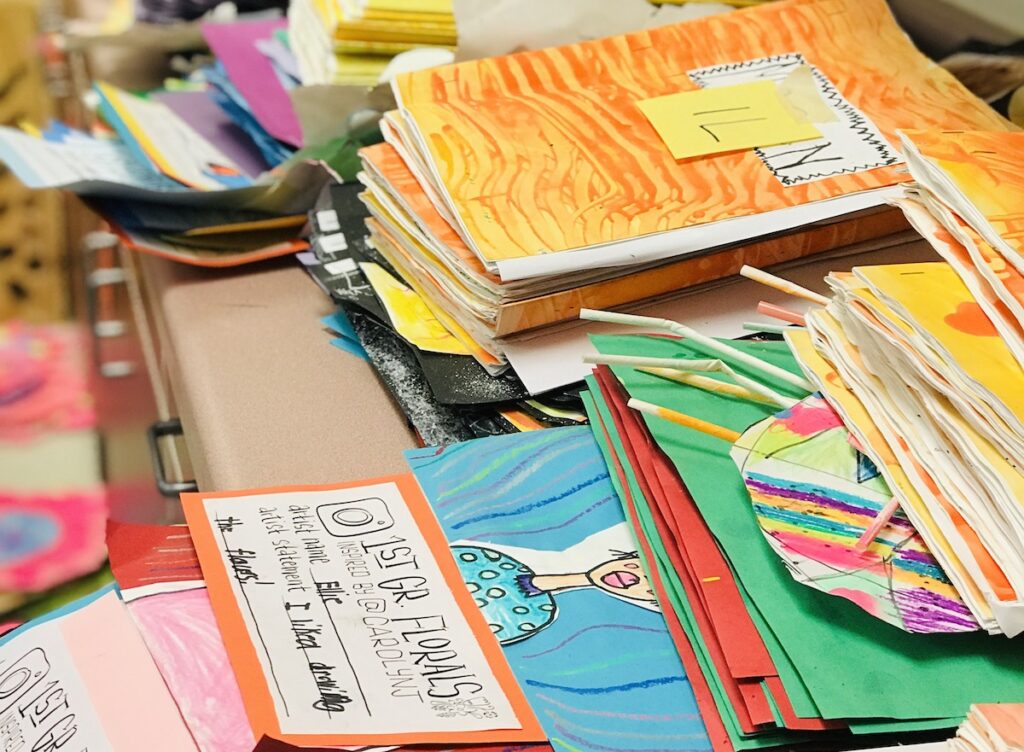
Creating sketchbooks with your students can offer a sense of ownership and pride while creating a safe place to make mistakes. Starting a sketchbook tradition with your elementary students can be fun, easy, and effective! Use these tips to help your elementary students learn to use sketchbooks this year!
Have you ever created sketchbooks in an elementary classroom?
What could you add to your student’s sketchbooks to make them more meaningful?
What other materials could you use to make your own sketchbooks?
Magazine articles and podcasts are opinions of professional education contributors and do not necessarily represent the position of the Art of Education University (AOEU) or its academic offerings. Contributors use terms in the way they are most often talked about in the scope of their educational experiences.

